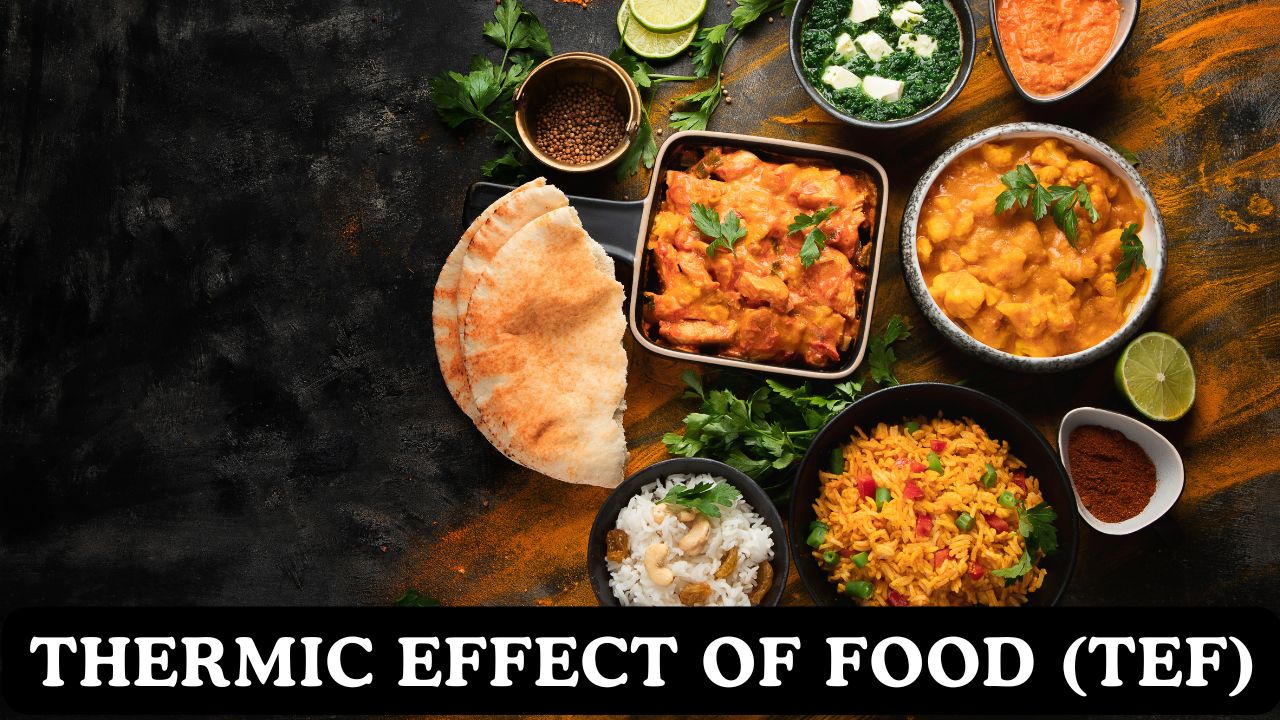Thermic Effect of Food Calculator
Discover how many calories your body burns digesting different foods and optimize your diet for maximum metabolism boost

What Is the Thermic Effect of Food?
The thermic effect of food (TEF) is the temporary increase in energy your body uses to digest, absorb, and process the food you eat. Think of it as your metabolism’s “afterburner” – it kicks in after every meal and burns extra calories for several hours. On average, TEF accounts for about 8-10% of your total daily calorie burn, but this can vary significantly based on what you eat. Regular exercise combined with strategic eating can maximize this natural metabolism boost.
💪 Why Protein Is Your Metabolism’s Best Friend
Not all foods are created equal when it comes to TEF. Protein requires the most energy to process, burning up to 25-30% of its calories just for digestion. This means if you eat 100 calories of protein, your body automatically burns 25-30 calories processing it! Carbohydrates burn about 5-10% of their calories, while fats only burn 0-5%. This is why high-protein diets are so effective for weight management and why strength training athletes focus on protein intake.
⏱️ How Long Does TEF Last and When Does It Peak?
TEF isn’t just a quick burst – it’s a sustained metabolic boost that lasts 3-6 hours after eating. The effect typically peaks within 1-3 hours after your meal, then gradually decreases. Protein meals create the longest-lasting TEF, while fat has the most delayed but extended effect. Understanding this timing can help you optimize meal scheduling around your workouts and daily activities for maximum metabolic benefit.
👉 For more tools, visit BrainyToolsHub.com.
Using TEF to Boost Your Weight Loss
🎯 Strategic Meal Planning for Maximum Calorie Burn
You can significantly increase your daily calorie burn by strategically planning your meals around TEF. Focus on getting 25-30% of your calories from protein sources like lean meats, fish, eggs, and dairy. This simple change can increase your TEF by 50-100% compared to high-fat meals. Combining this with regular strength training creates a powerful one-two punch for metabolism enhancement and muscle building.
🍽️ Meal Size vs. Meal Frequency for TEF
There’s an ongoing debate about meal frequency, but when it comes to TEF, larger meals actually produce a higher total thermic effect than smaller, frequent meals. However, the key is finding what works for your lifestyle and digestive comfort. Whether you prefer 3 larger meals or 6 smaller ones, focus on including protein in each meal to maximize TEF. The total daily TEF will be similar, so choose the pattern that helps you stick to your nutrition goals.
⚡ Combining TEF with Exercise for Maximum Results
The most powerful approach combines TEF optimization with regular exercise. Post-workout meals have an enhanced thermic effect due to increased muscle protein synthesis and metabolic activity. Compound exercises that work multiple muscle groups increase your post-exercise metabolic rate, amplifying the benefits of strategic nutrition timing. This combination can boost your total daily energy expenditure by 200-300 calories.
Foods That Maximize Your Metabolic Fire
🥩 High-TEF Protein Sources
The best protein sources for maximizing TEF include lean meats, fish, eggs, and dairy products. These complete proteins require significant energy for digestion and amino acid processing. Fish like salmon and tuna are particularly effective because they’re high in protein and contain omega-3 fatty acids that support metabolic health. Proper nutrition supports muscle recovery and helps maintain the high metabolic rate that comes with increased muscle mass.
🌶️ Metabolism-Boosting Spices and Foods
Certain foods and spices can temporarily increase your metabolic rate beyond their normal TEF. Spicy foods containing capsaicin (like chili peppers), green tea, and coffee can provide additional metabolic boosts. While these effects are modest, they can add up over time when combined with a high-protein diet. Whole foods also have higher TEF than processed foods because they require more energy to break down and digest.
🥬 Complex Carbs vs. Simple Carbs for TEF
Not all carbohydrates have the same thermic effect. Complex carbohydrates from whole grains, vegetables, and legumes have a higher TEF than simple sugars because they require more energy to digest and process. Fibrous vegetables are particularly effective because fiber itself requires energy to process but provides minimal calories. Fueling intense leg workouts with the right carbohydrates can optimize both performance and metabolic benefits.
Common TEF Questions and Myths
❓ Does TEF Really Help with Weight Loss?
Yes, but it’s not a magic solution. TEF can contribute an extra 50-100 calories burned per day when optimized through high-protein eating. While this might seem small, it adds up to 5-10 pounds of fat loss per year when combined with a consistent diet and exercise program. The real benefit comes from the appetite-suppressing effects of protein and the muscle-building benefits that increase your overall metabolic rate.
❓ Can You “Boost” TEF with Supplements?
While some supplements claim to increase TEF, the most effective approach is focusing on whole food protein sources. Protein powders can be helpful for convenience, but they don’t necessarily have higher TEF than whole food proteins. Building muscle through resistance training is far more effective for long-term metabolic enhancement than relying on supplements alone.
❓ Does Age Affect TEF?
TEF does tend to decrease slightly with age, primarily due to changes in muscle mass and metabolic efficiency. However, this decline can be largely prevented through regular exercise and maintaining adequate protein intake. Older adults who maintain active lifestyles and consume sufficient protein can have TEF responses similar to younger individuals. The key is preserving muscle mass through consistent strength training and proper nutrition.
❓ Is TEF Different for Men and Women?
Men typically have slightly higher absolute TEF values due to larger body size and higher muscle mass, but the percentage of calories burned through TEF is similar between genders. Women may experience variations in TEF throughout their menstrual cycle due to hormonal changes, but these differences are relatively small. The most important factor for both men and women is maintaining adequate protein intake and regular physical activity to optimize TEF response.
⚕️ Important Metabolism Information
This thermic effect of food calculator provides educational estimates based on established scientific research and should not replace professional nutritional or medical advice. Individual TEF responses can vary significantly based on factors including age, body composition, metabolic health, genetics, and overall fitness level. The calculator uses average values from research studies, but personal responses may differ by 20-50% from these estimates. While optimizing TEF can support weight management goals, it should be part of a comprehensive approach that includes balanced nutrition, regular physical activity, and healthy lifestyle habits. People with metabolic disorders, eating disorders, or other health conditions should consult healthcare professionals before making significant dietary changes. The TEF effect, while beneficial, represents a relatively small portion of total daily energy expenditure compared to basal metabolic rate and physical activity. Focus on sustainable, long-term nutrition and exercise habits rather than relying solely on TEF optimization for weight management results.
References
- Calcagno M, Kahleova H, Alwarith J, Burgess NN, Flores RA, Busta ML, Barnard ND. The Thermic Effect of Food: A Review. J Am Coll Nutr. 2019 Aug;38(6):547-551. doi: 10.1080/07315724.2018.1552544. Epub 2019 Apr 25. PMID: 31021710.
- Ravn, M., Gregersen, N. T., Christensen, R., Rasmussen, L. G., Hels, O., Belza, A., Raben, A., Larsen, T. M., Toubro, S., & Astrup, A. (2013). Thermic effect of a meal and appetite in adults: An individual participant data meta-analysis of meal-test trials. Food & Nutrition Research, 57, 10.3402/fnr.v57i0.19676. https://doi.org/10.3402/fnr.v57i0.19676
- Belko, A. Z., & Barbieri, T. F. (1987). Effect of meal size and frequency on the thermic effect of food. Nutrition Research, 7(3), 237-242. https://doi.org/10.1016/S0271-5317(87)80013-1

Manish is a NASM-certified fitness and nutrition coach with over 10 years of experience in weight lifting and fat loss fitness coaching. He specializes in gym-based training and has a lot of knowledge about exercise, lifting technique, biomechanics, and more.
Through “Fit Life Regime,” he generously shares the insights he’s gained over a decade in the field. His goal is to equip others with the knowledge to start their own fitness journey.
